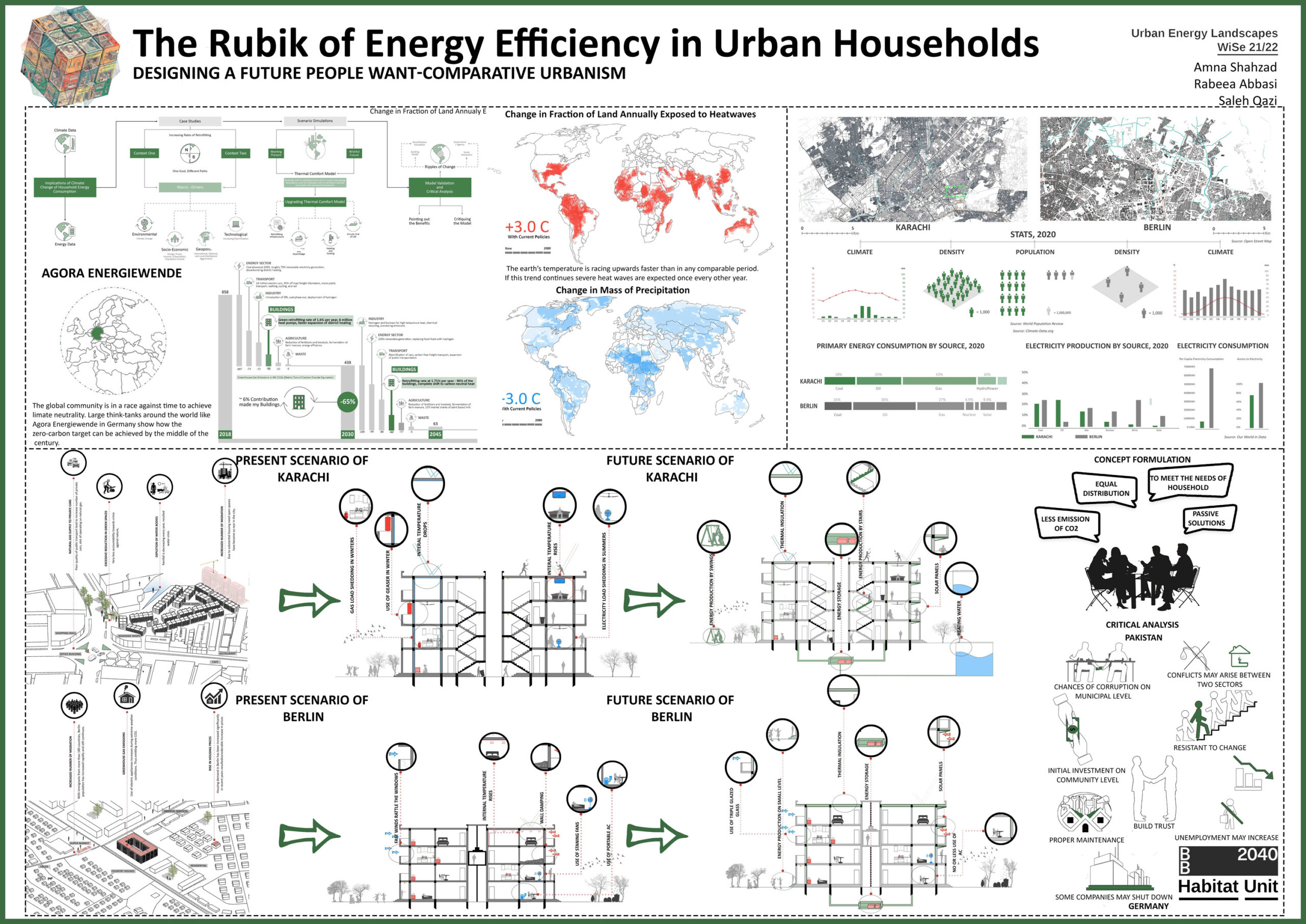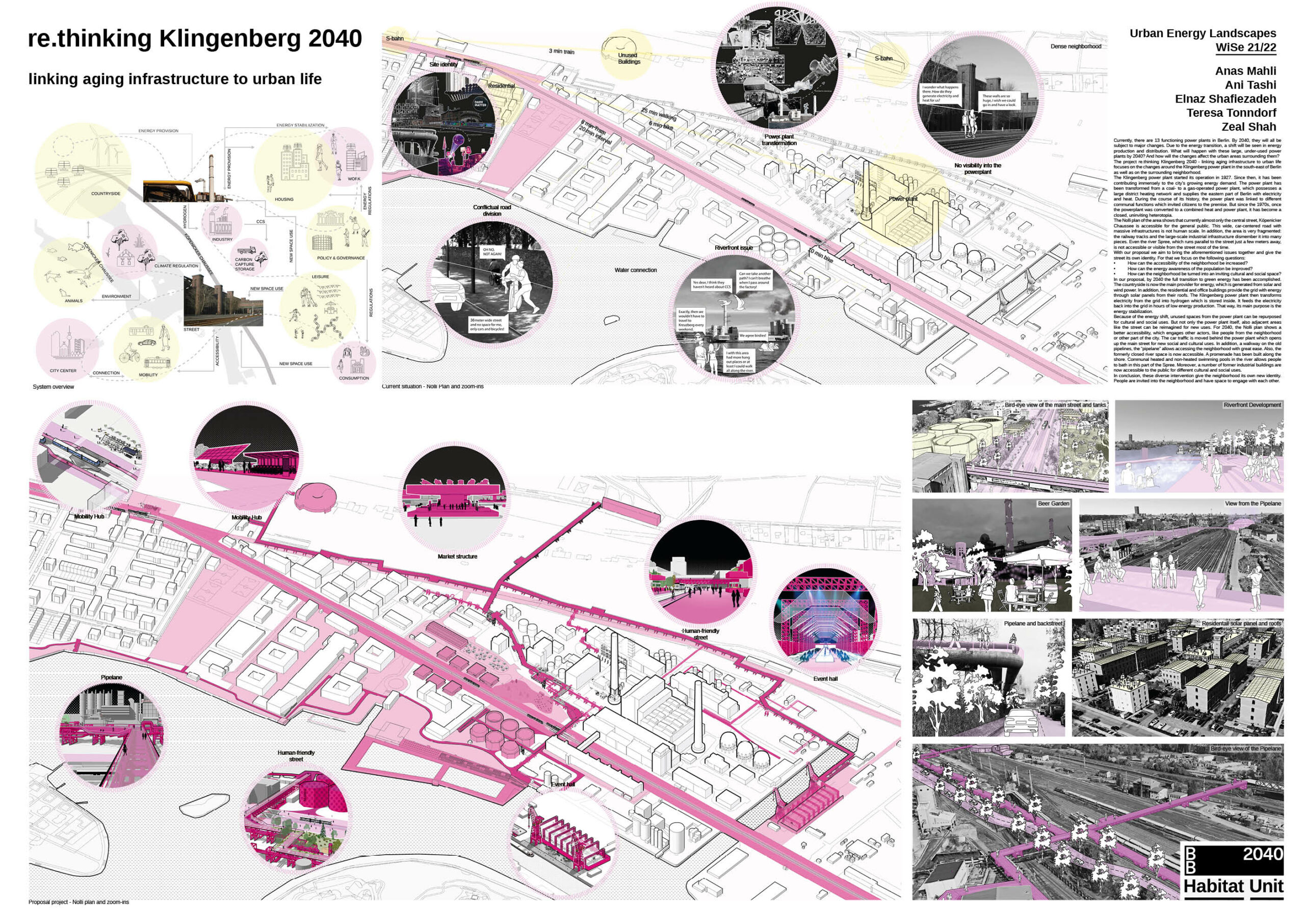Urban Energy Landscapes I Urban Scapes
UNIT /// STREET
By: Amna Shahzad, Rabeea Abbasi, Saleh Qazi (Group A)
Anas Mahli, Ani Tashi, Elnaz Shafiezadeh, Teresa Tonndorf, Zeal Shah (Group B)
Studio:
“Urban Energy Landscapes”
Prof. Dr. Elke Beyer
Rosa Pintos Hanhausen
David Bauer
Veit Vogel
Habitat Unit WS 2021/22
Rubik of Energy Efficiency in Urban Households
Houses are, after all, the most personal building typology – not only for the end user but for the architect as well. At their most fundamental, households provide shelters - at their best, they enrich the resident’s experiences and improve the efficiency of the broader systems involved. The preamble of our investigation first talks about the global scenario from the acquired climate data, followed by a strategic vision that focuses our explorations through space, as well as environmental, social, political, and technological macro drivers within the setting of two distinct contexts. The idea of giving new life to existing buildings has been embraced as the premise for a more sustainable practice, but also as a means of reinforcing the urban and cultural identity of cities.
The discussion will anchor on focused scenarios with option planning. That is to say, application of existing scenarios in order to think, formulate and translate the conflicts within the thermal comfort model of retrofitting single units and its potential for the future. We then conclude our discussion with some validation and self-reflection. All within a single unit.
re.thinking Klingenberg 2040
Linking aging infrastructure to urban life
Currently, there are 13 functioning power plants in Berlin. By 2040, they will all be subject to major changes. Due to the energy transition, a shift will be seen in energy production and distribution. What will happen with these large, under-used power plants by 2040? And how will the changes affect the urban areas surrounding them?
The project "re.thinking Klingenberg 2040 - linking aging infrastructure to urban life” focuses on the changes around the Klingenberg power plant in the south-east of Berlin as well as on the neighborhood.
The Klingenberg power plant started its operation in 1927. Since then, it has been contributing immensely to the city’s growing energy demand. The power plant has been transformed from a coal- to a gas-operated power plant, which possesses a large district heating network and supplies the eastern part of Berlin with electricity and heat. During the course of its history, the power plant was linked to different communal functions which invited citizens to the premise. But since the 1970s, once the power plant was converted to a combined heat and power plant, it has become a closed, uninviting heterotopia.
With our project we aim to bring the aforementioned issues together and give the street its own identity. For that we focus on the following questions:
· How can the accessibility of the neighborhood be increased?
· How can the energy awareness of the population be improved?
· How can the neighborhood be turned into an inviting cultural and social space?
In our proposal, by 2040 the transition to green energy will lead to an energy shift that allows unused spaces from the power plant to be repurposed for cultural and social uses. But not only the power plant itself, also adjacent areas like the streets can be reimagined for new uses.
BB2040
[EN] Berlin Brandenburg 2040 was initiated by the Habitat Unit in cooperation with Projekte International and provides an open stage and platform for multiple contributions of departments and students of the Technical University Berlin and beyond. The project is funded by the Robert Bosch Foundation.
[DE] Berlin Brandenburg 2040 wurde initiiert von der Habitat Unit in Kooperation mit Projekte International und bietet eine offene Plattform für Beiträge von Fachgebieten und Studierenden der Technischen Universität Berlin und darüberhinaus. Das Projekt wird von der Robert Bosch Stiftung gefördert.



